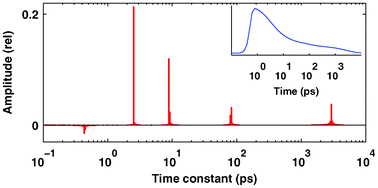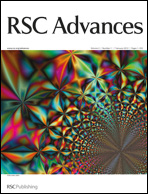Estimation of kinetic parameters from time-resolved fluorescence data: A compressed sensing approach
Abstract
The characterization of fluorescence kinetic measurements by a set of lifetimes and amplitudes is a well-known, ill-posed problem. The most effective approaches for dealing with this difficulty generally look for a regularized distribution of amplitudes on a predefined large grid of time constants. Here we argue that in the absence of any additional a priori knowledge on the underlying mechanism, the simplest solution of any complex kinetics is the sparsest distribution. We have found that the basis pursuit denoising procedure is an excellent method for finding very sparse models describing time-resolved fluorescence data. Our simulation results indicate that for truly sparse kinetics, this method provides a superior resolution of closely located time constants. Additional information on a distribution corresponding to a given level of noise can be obtained from the averaged solution even if the true kinetics are far from sparsity. A case study on a compressed set of real


 Please wait while we load your content...
Please wait while we load your content...